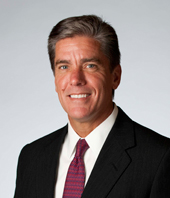From “Trust Me” to “Show Me”: Moving Sustainability at Shell Oil From “Priority” to “Core Value”
The timeline of energy development projects now is largely driven by sustainability and social performance issues, says Marvin Odum, president of Shell Oil. That’s prompting innovations in how the company involves external stakeholders, incentivizes employees and drives changes throughout the entire energy industry.

Marvin Odum, President of Shell Oil Co.
“When I look at an investment proposal now,” says Marvin Odum, president of Shell Oil Co., “it still covers the technical issues, of course. It certainly covers the financial issues. But fully half of that proposal deals with what I would call the nontechnical risk: social performance and sustainability issues.”
“Here’s where it gets even more interesting,” he continues. “As you get better companywide at exploring, understanding and addressing those nontechnical risks, it drives innovation. Because mitigating those risks often drives you right back into the technology loop — back into asking how can you solve novel problems in novel ways, and how can you do it at affordable cost? At this point, it may be the number one driver of our innovation program.”
Like other energy companies, Shell is in a classic “between a rock and a hard place” situation. The world wants what Shell provides, but it wants it when it wants it, at a price it likes to pay, and with positive or at least neutral environmental and social impact. That’s forced the company to adapt its traditional innovation approach — and even its overall organizational structure — in some surprising ways.
The need for those changes has also been heightened by the environmental damage and public relations disaster of the BP oil spill in 2010, Odum says. “What the Gulf of Mexico spill shows us is we are dependent on how the whole industry performs; it affects a part of our license to operate.” That is true even though Shell enjoys a reputation for sustainability performance that is stronger than that of most other energy companies. For the last two years, respondents to MIT Sloan Management Review’s annual sustainability survey have named Shell Oil among the top 10 companies that are “world class” at paying attention to the issue.
Still, dealing with the broader public perception and wariness that greets energy companies, says Odum, has become a major focus of the company. Today, managing the concerns of external stakeholders has prompted changes in management approaches and strategy internally, and sustainability issues have moved in Shell from being a company “priority” to a “core value.�






Comments (6)
stella.emeka-okoli
James Hannagan
Siswanto Gatot
James Wong
Phil
Luis